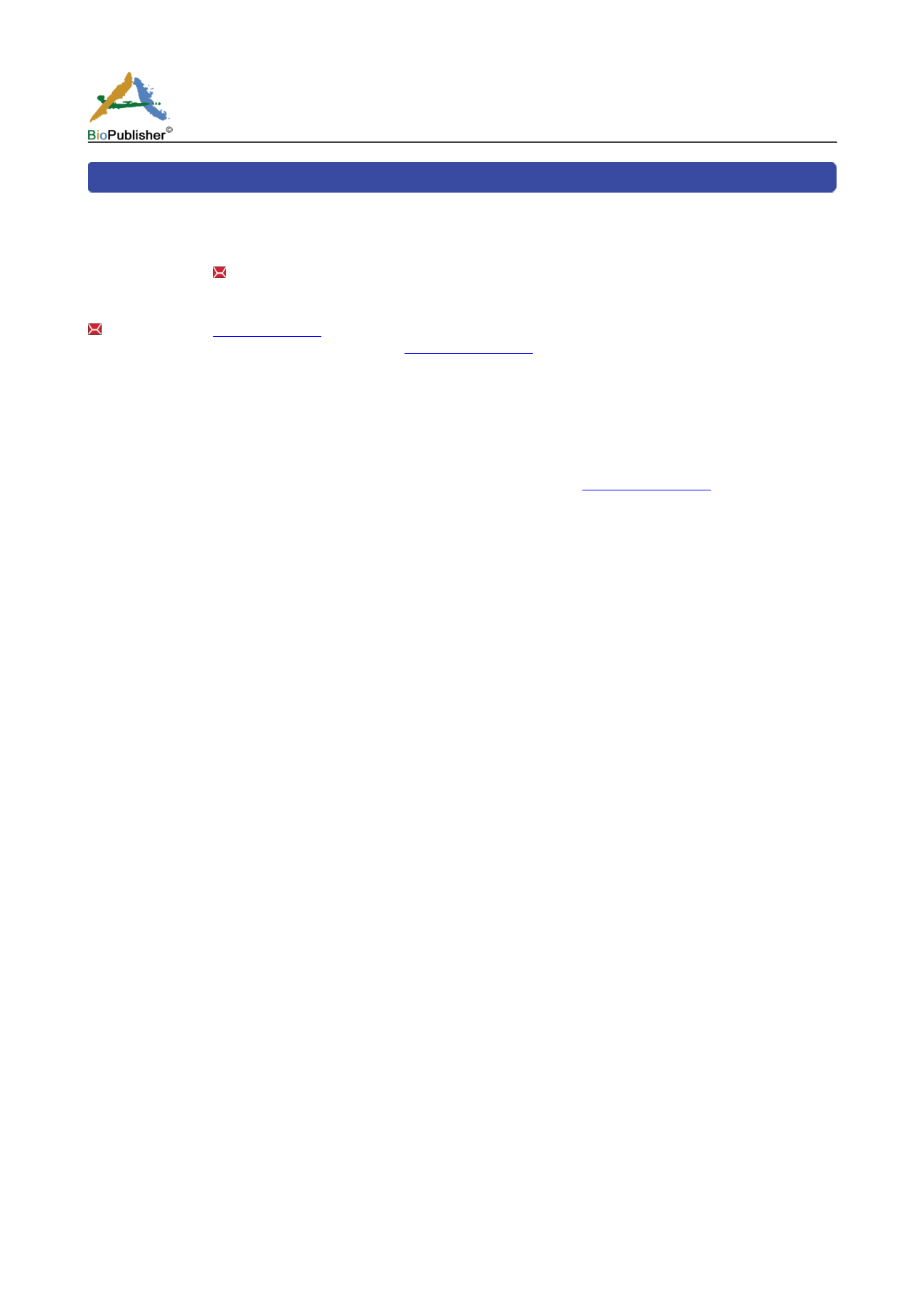
International Journal of Marine Science, 2016, Vol.6, No.18, 1-14
1
Research Article Open Access
A Coccidian Parasite Inhabiting the GI Tract and Leucocytes of
Styela plicata
(Lesuaer, 1823) and
Ciona intestinalis
(Linnaeus, 1767) Sampled from the
Arabian Gulf (Saudi Arabia)
Gaber Ahmed Saad
1,2
1. Department of Biology, Deanship of Preparatory Year and Supporting studies, Dammam University, Saudi Arabia, KSA
2. Department of Zoology, Faculty of Science, Alexandria University, Alexandria, Egypt
Corresponding email
International Journal of Marine Science 2016, Vol.6, No.18 doi
Received: 29 Feb., 2016
Accepted: 26 Apr., 2016
Published: 26 Apr., 2016
Copyright
© 2016 This is an open access article published under the terms of the Creative Commons Attribution License, which permits unrestricted use,
distribution, and reproduction in any medium, provided the original work is properly cited.
Preferred citation for this article
:
Saad G.A., 2016, A Coccidian Parasite Inhabiting The GI Tract and Leucocytes of
Styela Plicata
(Lesuaer, 1823) and
Ciona intestinalis
(Linnaeus, 1767)
Sampled from the Arabian Gulf (Saudi Arabia), International Journal of Marine Science, 6(18): 1-14 (do
Abstract
Styela plicata
and
Ciona intestinalis
were collected from the shallow water of the Arabian Gulf, Saudi Arabia during 2011
– 2014. Breeding and non breeding seasons were considered. Specimens were dissected alive in seawater and isolated parts from the
intestine were sampled. In a previous study, a sporocyst of a coccidian was observed completely embedded in the intestinal epithelial
cells of
Styela plicata
. Since that time, the author tried to find all stages of the life cycle of this coccidian parasite and describe them.
Ascidians may obtain parasites from their food through water filtration, or directly swallow an unsporulated oocyst with incurrent
water. Sporozoites initiate infection probably homoxenously or heteroxenously. Sporozoites then enter host intestinal epithelial cells
and there transform into meronts. Merozoites of the final merogony enter blood cells to initiate the gametic cycle, and become either
macrogamonts or microgamonts. Microgamontes became trophozoites (uninucleated zoite). These divide by multiple fission to
produce large numbers of flagellated microgametes. Macrogamonts develop into macrogametes without further division. Syngamy
produces zygotes, then merogony proceeds to form merozoites which enter new host cells extraintestinal like blood cells to produce
more merogonous cycles. The present study concluded that the investigated parasite may belong to Genus
Isospora
(schneider, 1881),
since in isosporans sporogony leads to the formation of four sporozoites inside each sporoblast and this agametic phase develop
extraintestinal.
Keywords
Ascidians; Filter feedin; Homoxenous or heteroxenous infection; Uninucleated zoite; Sporozoites; Merozoites
Introduction
The pathogens of interest are those commonly associated with diseases. In many marine organisms health
assessments, the role of parasites on their hygiene can be overlooked. Their presence is usually only a concern
when they affect an edible species of interest, or cause detrimental effects to the economy or a recreational activity,
or a commercial fishery. Parasitic species can be found everywhere, and on every living organism. Their presence
in their host is generally at equilibrium in marine organisms and the most common lifestyle on the planet
(Marcogliese, 2005). Consequently, it is difficult to find any environment or organism that can be labeled as
„pristine‟ or parasite-free. When researchers describe control sites as being pristine, pathogen or disease-free, they
are merely describing the lack of viruses, bacteria and xenobiotics, and are not generally referring to parasites.
There are times when changes in the environment (natural or anthropogenic) can change the state of balance of the
parasite between host and nature, thus resulting in disease. These changes can be environmental such as
temperature, climate, or anthropogenic such as pollution and urbanization (Lafferty and Kuris, 1999). When the
dynamic equilibrium between host and parasite is lost, some changes can occur within the host. These changes can
cause mechanical damage (fusion of gill lamellae, tissue replacement), physiological damage (cell proliferation,
immunomodulation, altered growth, detrimental behavioral responses,) and/or reproductive damage (Buchman
and Lindstrّ
m, 2002, Knudsen et al., 2009; Diouf and Toguebaye, 2013). The roles, functions, and life-styles of
parasites help to characterize an ecosystem. Knowledge of parasites and parasitic communities, allows researchers
to recognize the role of the marine organism`s host in the food web or ecosystem (Marcogliese and Cone, 1997;
Overstreet, 1997; Marcogliese, 2005), determine changes in host diet (Campbell et al., 1980; Huxham et al., 1995;


